Vaccines and Trump: Will Newsomâs formula for beating the recall work for Democrats in 2022?
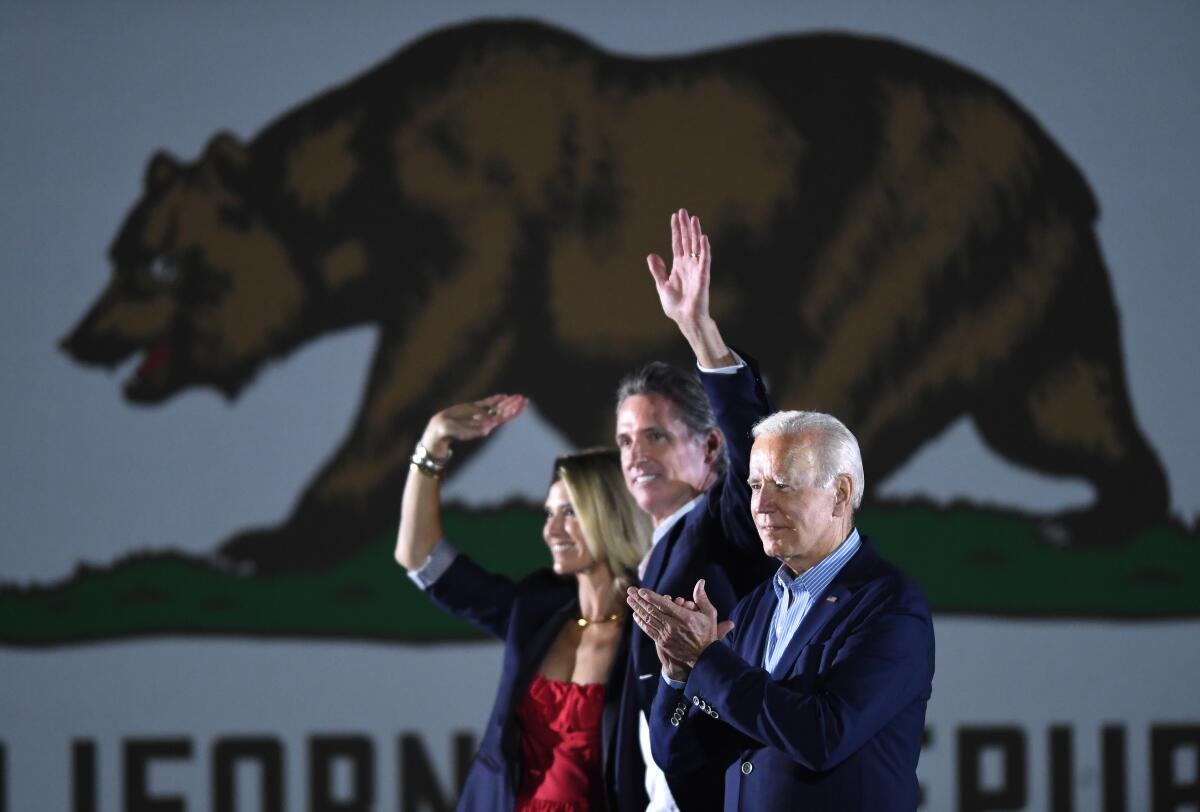
Gov. Gavin Newsom decisively fended off a recall with a two-pronged strategy: nonstop GOP bashing and an unapologetic embrace of vaccine mandates. Now, the architects of his win say Democrats across the country should follow suit in next yearâs midterm election.
âStep 1: Name the villains,â said Sean Clegg, a top advisor to the campaign. âStep 2: Describe the stakesâ â which Newsom portrayed as a life-or-death choice on ending the pandemic.
For national Democrats facing an uphill battle to keep control of Congress in 2022, those two steps behind Newsomâs overwhelming victory on Tuesday may offer a road map for success â the former rousing otherwise disengaged Democrats and the latter making inroads with independents and even some Republicans.
But prevailing in indigo-blue California is one thing, while eking out wins in swing states and congressional districts is quite another.
âNewsom had plenty of room for error, considering [Joe] Biden won by 29 points [in California] in 2020,â said Nathan Gonzales, editor of Inside Elections, which offers nonpartisan campaign analysis.
Democrats in purple states âessentially have no room for error,â he said. âThey canât afford any slippage in Democratic turnout, they canât lose any independent voters, and they canât afford Republican turnout to surge.â
Hereâs what we know after the polls closed about the attempt to recall Gov. Gavin Newsom.
There are myriad reasons that Tuesdayâs election cannot neatly be seen as a test run for 2022 nationally. A special election governed by Californiaâs quirky recall rules is inherently different than conventional head-to-head matchups during the heat of a national election season. And Californiaâs overwhelming Democratic tilt meant the math was always in Newsomâs favor.
Still, Newsomâs campaign realized early that surplus would do little good if those voters didnât show up. According to internal campaign polls obtained by The Times, 70% of Republicans in the state had heard quite a bit about the recall in February, when proponents were gathering signatures to get it on the ballot, while just 36% of Democrats said the same.
The asymmetry was especially pronounced in this election off-year; the campaignâs focus groups found that Democrats in particular were eager to disconnect from political news. That dynamic threatens to carry over into the midterm next year, when the party out of power typically makes gains.
The question facing Democrats is, âhow do you wake up that base to not fall to historical trends of midterm low performance and turnout?â said Juan Rodriguez, Newsomâs campaign manager. âThat is where we couldâve beenâ in the recall election.
The Newsom campaignâs response was to frame the election as a right-wing power grab, using former President Trump as a bogeyman. The campaign homed in on replacement candidate Larry Elder, the talk radio host, as a stand-in for Trumpism, which amped up Democratic engagement. By the end of summer, Democrats were nearly on par with Republicans in awareness of the recall, according to Newsomâs polls, and the election was presented as a choice, not a referendum on the governorâs performance.
Larry Elder shook up the recall campaign. What will the conservative talk radio host do next?
âWhen itâs a Democrat versus a Republican, and the Republican is a Republican in the Trump mold ... then youâre looking at numbers that are more like 60-40 instead of 52-48,â said David Binder, a pollster who worked on Newsomâs campaign.
Elder, a first-time candidate with a tendency for provocation, may have been a blessing for Newsom, but the campaign says it wasnât simply a one-time lucky break.
âThe Larry Elder types are going to be on the ballot in other places,â Rodriguez said.
The tactic â using negative campaigning about your opponent to juice turnout among your base â is âa powerful component of our elections,â Gonzales said.
âDemocrats have been searching for things to rally against,â he added. âThe governor and his team found what they needed to make sure Democrats were sufficiently angry in order to turn out in a weirdly timed election.â
But a strategy that relies on fueling Democratsâ most reliable voters is far more straightforward in a blue state than in most competitive House and Senate races, said Meredith Kelly, a former spokesperson for the Democratic Congressional Campaign Committee.
Given the number of Democrats in California, âif you just get them excited enough or concerned enough to vote, you win,â she said. âIn swing districts, there just arenât enough Democrats to win by only turning them out, so everything becomes more nuanced and less partisan. â
Matt Gorman, a veteran GOP political strategist who worked for the National Republican Congressional Committee and the presidential campaigns of Jeb Bush and Mitt Romney, said Democrats risked learning the wrong lessons from Newsomâs win.
California voters overwhelmingly rejected the attempt to remove Gov. Gavin Newsom before the end of his term.
âGavin has the luxury of going around and saying, âRepublican, Republican, Republican,â and having the state revert to the natural mean, in a heavily Democratic state,â Gorman said. âIf Democrats try to do that in places like some of the seats in Orange County ... or in places across the country with suburban districts like Pennsylvania, thatâs a very different thing. Youâre not going to get that same visceral reaction you get statewide in California.â
Some national Democrats, including those close to President Biden, have signaled theyâd prefer to focus on the partyâs accomplishments next year, putting less focus on Republicans and especially Trump. But in gubernatorial races this year â the recall election in California and contests in Virginia and New Jersey â Trump has been a central figure.
In Virginia, Democratic gubernatorial contender Terry McAuliffe has been ceaselessly linking Glenn Youngkin, his Republican opponent, to Trump and the GOP-backed Texas abortion ban.
âAfter four years of being awake and paying hyper-attention because a madman was in the White House, a lot of Democrats now have sort of burnt out. The challenge for our party is that it is harder now to see the threat because we have a competent, experienced person as president,â said Fred Yang, a Democratic pollster working with McAuliffe. âMidterm elections are about getting out the base. Donald Trump and the Republican Party are still strong motivators for Democrats.â
On Tuesday, the California voters most active leaned toward recalling Newsom, but that was just part of the overall picture.
While the Newsom team had from the outset trained its focus on the conservative opposition, the governorâs closing message â an appeal based on his management of the pandemic â was not in the plan. Until the Delta variant emerged.
The public frustration over new coronavirus concerns offered Newsom opportunity. His campaign polling showed an appetite for vaccine requirements to hasten the end of the pandemic. Of the five different proposals in campaign surveys â including requiring vaccines for teachers and allowing businesses to impose vaccine verification for customers â all got at least 60% approval. Recent national polls from Morning Consult and Axios/Ipsos found similar levels of support for mandates.
Ken Spain, a GOP strategist and former spokesman for the National Republican Congressional Committee, acknowledged that Newsomâs stance may translate well for Democrats throughout the nation next year.
âVoters appear to like the vaccine mandates,â Spain said. Getting more aggressive on anti-COVID policies âhelps Democrats close the gap to some degree on an issue that is cutting against them as COVID cases rise and the economic disruption continues.â
It is impossible to predict what the COVID-19 pandemic will look like next year, or whether the issue will remain top of mind for voters.
Binder, the Newsom campaign pollster, said that emphasizing the issue could still pay dividends, helping Democrats paint Republicans as extreme in their opposition to vaccine mandates, and combating the GOPâs relentless claims that Democrats are âsocialistsâ or that they want to âdefund the police.â
âThe Democratic Party has had branding problems,â Binder said. âThe thing that is different now with COVID â and itâs still applicable even if COVID is gone next year â is that Republicans have their own branding problem on par or worse than Democrats.â
The messaging matters beyond the Democratic base. Newsomâs campaign polling found that independent voters, who skew left in California, opposed the recall by 17 points after being presented his stance on mandates in contrast with his opponentsâ positions.
Votersâ inoculation status has become a new indicator for how they are likely to vote. Across all parties, vaccinated voters were more likely to oppose the recall than their unvaccinated counterparts; 15% of vaccinated Republicans, for example, were against the recall, compared with 1% of unvaccinated Republicans, according to campaign surveys.
While Newsomâs path to victory may offer some guidance for his party in the upcoming campaign season, it has not upended the fundamental political landscape.
âThe Democratic majorities in the House and the Senate were vulnerable before the election and are still vulnerable after the election,â Gonzales said. âRepublicans can have a very good election in 2022 without winning states or districts that are anywhere near as Democratic as California.â
More to Read
Get the L.A. Times Politics newsletter
Deeply reported insights into legislation, politics and policy from Sacramento, Washington and beyond. In your inbox three times per week.
You may occasionally receive promotional content from the Los Angeles Times.
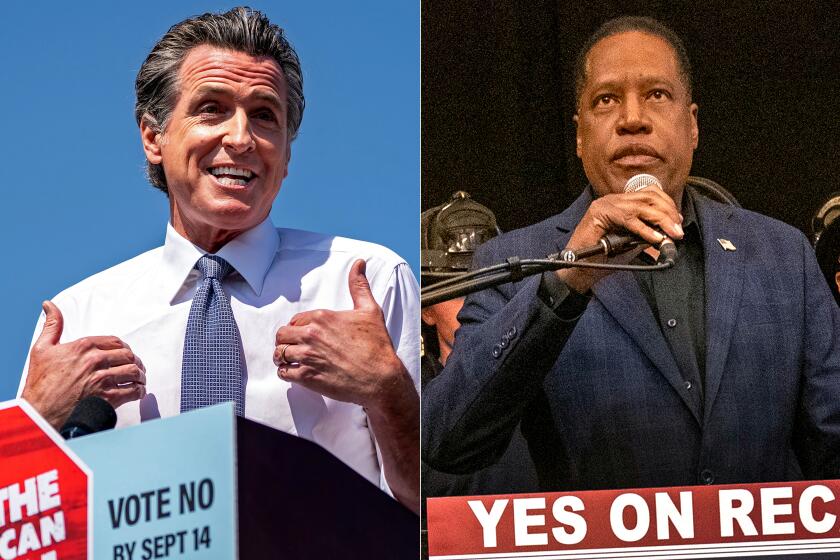
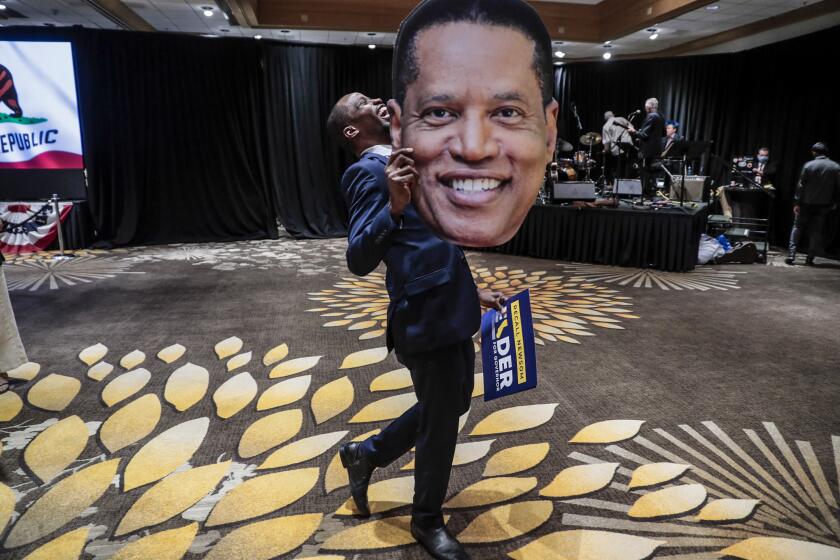
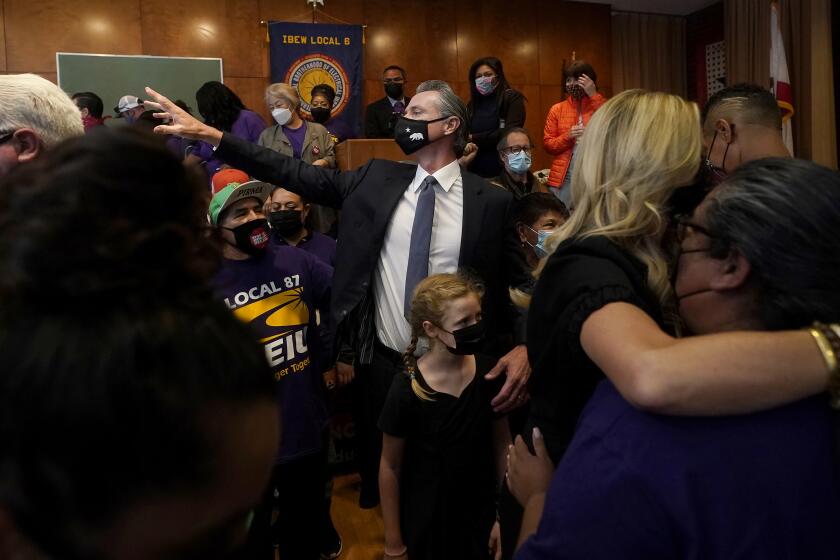
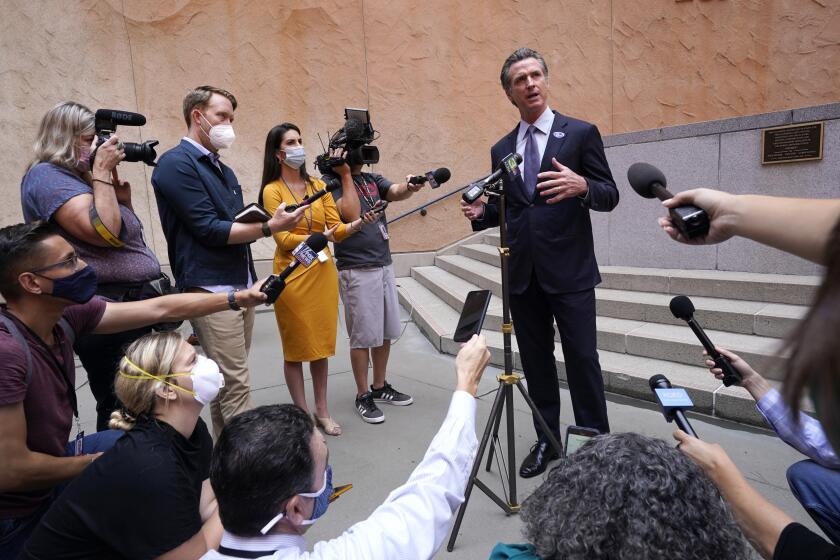








![[20060326 (LA/A20) -- STATING THE CASE: Marchers organized by unions, religious organizations and immigrants rights groups carry signs and chant in downtown L.A. "People are really upset that all the work they do, everything that they give to this nation, is ignored," said Angelica Salas of the Coalition of Humane Immigrant Rights. -- PHOTOGRAPHER: Photographs by Gina Ferazzi The Los Angeles Times] *** [Ferazzi, Gina -- - 109170.ME.0325.rights.12.GMF- Gina Ferazzi/Los Angeles Times - Thousands of protesters march to city hall in downtown Los Angeles Saturday, March 25, 2006. They are protesting against House-passed HR 4437, an anti-immigration bill that opponents say will criminalize millions of immigrant families and anyone who comes into contact with them.]](https://ca-times.brightspotcdn.com/dims4/default/34f403d/2147483647/strip/true/crop/1983x1322+109+0/resize/840x560!/quality/75/?url=https%3A%2F%2Fcalifornia-times-brightspot.s3.amazonaws.com%2Fzbk%2Fdamlat_images%2FLA%2FLA_PHOTO_ARCHIVE%2FSDOCS%2854%29%2Fkx3lslnc.JPG)



